|
LOCATION
OF NEW CALEDONIA CLOSE TO AUSTRALIA
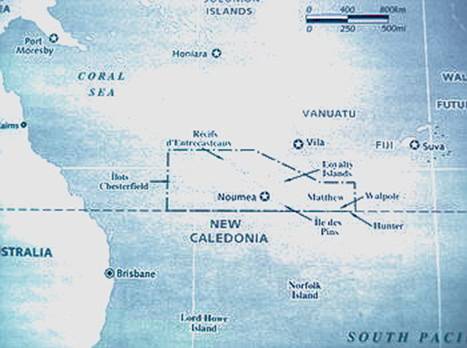
New Caledonia was 6 days sail NW of New Zealand, which we achieved with just a
blip of bad weather lasting 18 hours. We were lucky, many had to endure
2 full days of wind on the nose and five other sailing boats were in serious
difficulty when they left just a week after us! As we sailed North West into the
direction of where the bad weather often comes from, we were grateful not to
have any worse surprises!

Noumea, Capital of New Caledonia
Finding ourselves in France, which is printed over the maps of New Caledonia –
is almost like cheating. OOOhhh –lala that’s wonderful, we
can be in the South of France without having to take the boat all the way
back to Europe! All the delicious food
imported from France
is the main attraction, plus we’re made most welcome being citizens of
the European Union.

David
celebrating his 60th with arms wrapped round his French and
American girlfriends onboard Kanaloa
US, NZ and Oz citizens are only given a
one month visa, whilst we were given 3 months with no problem extending it.

French Sailing Friends, Florence and
Thierry whom we met in 1998 in Curacao
on their boat Malvina now live and work here, and have produced one boy with
another baby on the way.
This large island was cut off from the
Australian part of Gondwanaland and has many of the same species of plants,
which have developed in their own individual way.

Overlooking
Southern end of New Caledonia

Indigenous
‘kanacs’ are Melanesian in origin, which means black skinned, curly haired people that appear to
have come from Africa, Of course they didn’t sail here all those
thousands of years ago, they came from Indonesia, where the same black people
are still living in some of the southern islands.

Culturally, the ‘kanacs’
which means people from Pacific Islands in the Australian lingo, are so well
cared for by the French Government, that they have the schooling, basic
foods, electricity and water all provided for them in their villages.
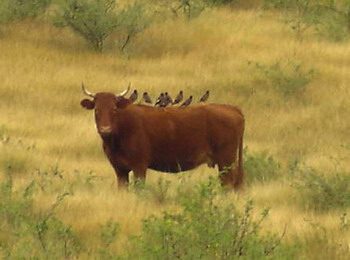
Many
have cattle farms on the dry NW coastlands
I only need to say here that once people
have benefits, they soon realise that work is only necessary if you want to
spend it on luxuries, so the indigenous population here suffer the same way
that all unemployed people do in the developed world, except that they
don’t have to suffer if they can forego the consumerism, as many have
been given back their own land on this beautiful island.

Schoolgirls
waiting for bus home by the bridge
Sadly they think that independence will
be wonderful for them, oblivious to their cousins in Vanuatu who are struggling hard,
realising that they were not ready for independence when they got it 25 years
ago!
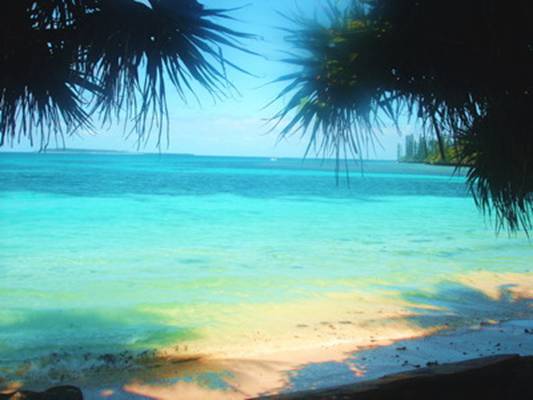
These
are the classic colours that encourages travellers to come to Iles des Pins

Soft
Silvery sand beneath the feet is a joy
The tall Norfolk Pine trees give the Iles
of Pines its name.
We had our good friend Eric Pinel who
does our website (kanaloa55.com) come and stay with his girlfriend.
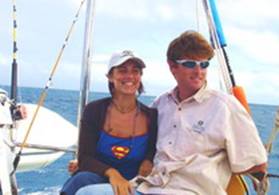
Eric and Alice’s Honeymoon on Kanaloa
She had just joined him in Tahiti from France
to set up home together. They wanted to check out New
Caledonia for life-style before finally deciding on Tahiti. The cool Winter weather happily made the
decision for them. Tahiti is better!
These splendid Auracaria trees behind the
boat below are related to the Kauri trees in New Zealand. There are
almost ten times more species of plants here than in New Zealand, to give you an idea
of how old the land is.

Iles des
Pins traditional craft
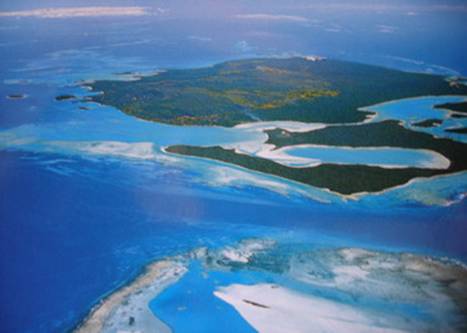
Ariel
view of the main entrance to Iles des Pins

Singer at
Iles des Pins
The French discovered that nickel lies
all over the surface of the top of the mountains here, exposed by erosion.
As nickel is used so much in the manufacture of stainless steel and in
electronic technology, the country has become the most important exporter in
the world.

Blue
River Provincial Park
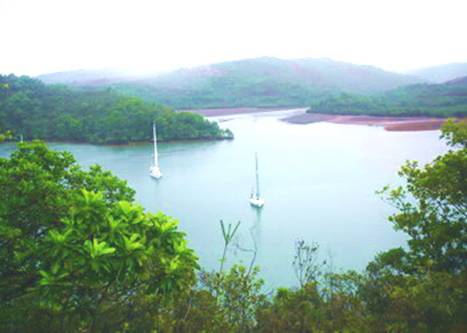
Protected
Anchorage close to the Riviere Bleue Park

The red
earth is caused mainly by weather
Erosion
after mining from the top soil
Thankfully, hardly anybody lives here,
giving the impression of virginal, untouched country when one gets away from
the open cast mining.

Nautilus
shells
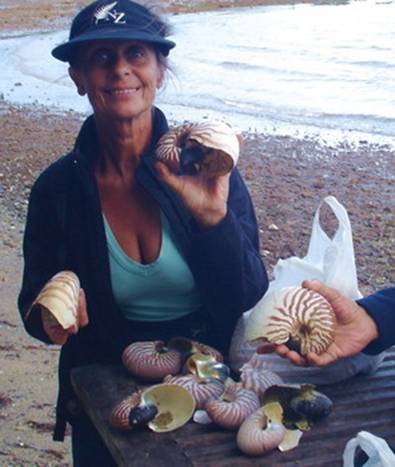
Claude
and I were able to collect bags full of them from one of the beaches
We sailed all the way round it, taking 6
weeks – which gave us plenty of opportunity of getting the general
layout of the landscape, flora and fauna. The main island, called
‘Grand Terre’ has a very different climate and landscape between
its eastern and western coasts. The east coast is wet, lush and
mountainous with a shoreline cut by narrow but deep estuaries. The west
coast is dry and windy, with wide, grassy coastal plains on which graze the
cattle, and large but shallow coastal bays, line with mangrove forests and
beaches. Almost 75% of the ‘Grand Terre’ is surrounded by
reef, giving wonderful protection to sailing and fishing vessels whilst
circumnavigating.
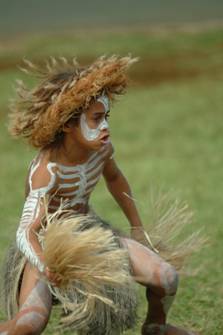
Young
‘Kanac’ boy dancing

Kanaloa circumnavigating
‘Grande Terre’

Underwater
soft corals were a feast for the eyes

Angel
fish, anemones and soft corals thrive in cool waters

As
were the flowers above ground
(Oxera
Nerifolia)

Carved
Totems around burial ground
On Ile
des Pins

A soft
morning sunrise in a sheltered anchorage
NW New
Caledonia

David
flying in friend Patrice’s microlight

Bonte,
with Microlight carried aft
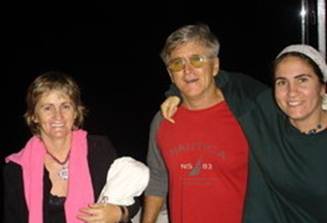
Bonte’s
owners, Pierette and Patrice
With
daughter Delphine
Who
sadly died in December 2005 in a minibus accident
While
working as a missionary in Nigeria
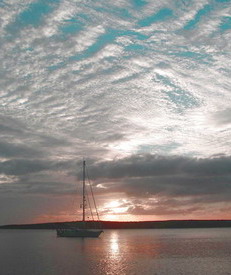
Sun
set the colour of the red earth
|

